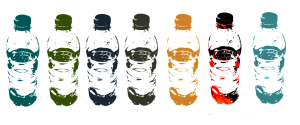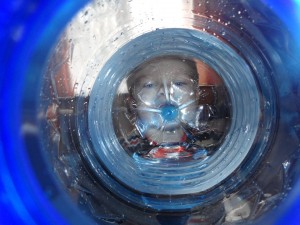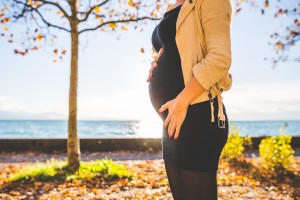It’s hard to picture life without plastic – it’s everywhere! However, did you know that fully synthetic plastic is a relatively new invention? The plastic we use today is a phenomenon of the 20th century. We are now discovering that the use of plastic (with focus on plastic water/juice/sports drink bottles, food storage containers, and baby items) and resultant chemical leaching can have far-reaching health consequences, and is of especially great concern with regard to pregnancy.
Why Are We Using Plastics in the First Place?
The first completely synthetic type of plastic (a polymer made of phenol and formaldehyde) was invented in 1907, and was used to make a then-popular type of jewelry. From that point forth, the use of plastics exploded. By the 1940s, the first commercial plastic bottles1 came on the scene, as did the plastic food storage container which was all the rage, and was even hailed as a “miracle product.” Along with the post-war “baby boom” came the kitchen that was neatly organized, and plasticized.2 Gradually, more and more companies began to switch from old fashioned, clunky, heavy glass (which is basically made of liquid sand)3 to plastic bottles and containers (made up of a soup of unpronounceable chemicals); after all, it was SO much lighter than glass, easier to handle, cheaper, and didn’t break during shipping! Everyone LOVED it. There was the occasional whispered grandma’s comment of, “Oh, I don’t like drinking out of plastic – it has a strange taste,” which was usually dismissed as, “old fashioned.”
How Are Plastics Made?
In a nutshell, plastics are a combination of chemicals which undergo a heating process (using more chemicals as catalysts) to melt them together, which are then molded into containers, etc., cooled, and then filled with drinks and food for human consumption, etc. Chemicals from plastics leach into the contents of the containers – the health effects of which are really just beginning to be known.
To give you a very basic idea of how plastics are made, we’ll focus on polyethylene terephthalate (PET or PETE) which is used for single-use water bottles, single-use sports drink bottles, and some types of food containers:

Polyethylene Terephthalate (PET or PETE)
Used to make disposable beverage bottles and permanent-press fabrics, polyethylene terephthalate (PET or PETE) is produced by chemically combining ethylene glycol (a colorless liquid commonly used in antifreeze),4 and terephthalic acid (a white crystalline/powder which is one part of three phthalic acids)5 obtained from xylene (widely used as a commercial and industrial solvent).6,7 When heated together with other chemicals necessary to quicken the reaction, polyethylene terephthalate (PET or PETE) is produced in the form of a hot, liquified mass which is then either spun into fibers to make polyester, or solidified for processing into bottles for water, sports drinks, peanut butter, pickles, vegetable oil, and salad dressings, etc.8,9
Different Types of Plastics
There are different types of plastics made for different things, which are named with numbers. Here is a list of the various types of plastics (with their respective numbers – usually to be found on the bottom of the container) and their uses:
No. 1: Polyethylene Terephthalate (PET, PETE) – single-use beverage bottles, sports drinks, some food containers, and microwavable food trays.
No. 2: High-Density Polyethylene (HDPE) – a stronger type of plastic used for milk, juice, re-usable sports water bottles, and shampoo, motor oil, antifreeze, etc.
No. 3: Polyvinyl Chloride (PVC, vinyl) – shower curtains, shrink wrap, deli/meat wrap
No. 4: Low-Density Polyethylene (LDPE) – squeezable bottles, shrink wrap, plastic wrap, coating for milk cartons, garbage bags, grocery bags, toys
No. 5: Polypropylene (PP) – yogurt, margarine
No. 6: Polystyrene (PS) – packaging for furniture, and food serving packaging (poultry trays, rigid food containers)
No. 7: Other: a container/package made with a resin other than the six listed above, or made of more than one resin and used in combination. Polycarbonates fall into this category.
Food storage containers are most commonly made from No. 1 (PET) or No. 7 (“Other”).10,11
Bisphenol A (BPA) – Its Effects During Pregnancy and Beyond

Bisphenol A (BPA) is a chemical building block of polymer coatings and plastics – mostly polycarbonate (which falls into category No. 7 in the list above) and epoxy resins(the properties of which “find many applications”);12,13 it is present in the lining of food and beverage cans, reusable sports water bottles, large 5-gallon water bottles, office water dispensers, etc.14,15,16 Bisphenol A (BPA) has been shown to have “effects on the brain, behavior, and prostate gland in fetuses, infants, and children,”17 and is also linked to estrogenic sex characteristics in boys and men, i.e., gynecomastia or “moobs.”18,19 There are studies showing prenatal exposure to low doses of BPA are connected to metabolic disruptions, increased body weight in offspring, a predisposition to diabetes, and disturbance of normal auto-regulation of blood sugar in male adult children (and mothers).20,21 BPA exposure in utero has been linked to disruption in development of nervous system cells, and increased hypothalamic appetite (being constantly hungry) and less satiety peptides (a sensation of never feeling satisfied after eating a normal amount of food).22,23
To give you an idea of the far-reaching human exposure to BPA: detectable levels of BPA in 93% of 2,517 urine samples from people six years of age and over were found during a study conducted from 2003-2004 by the Centers for Disease Control (CDC). 24
It’s Not Only About BPA
Bear in mind that over a thousand various additives are used in making plastic. It’s not only about BPA; there are also other hazardous compounds: initiators, catalysts, solvents, and other additives that are necessary for polymerization – all of which can leach into water, juice, or food, and then later, into the environment where it is discarded. “Because additives are not usually chemically bound to the plastic structure, they are able to leach out from the polymer matrix.”25
EVEN if you see a label that says, “BPA-free,” it still doesn’t mean it’s safe. Studies are showing that estrogenic activity (EA) still occurs with “BPA-free,” and “PC-free” (polycarbonate-free) plastics and can linings.26
Steps to Take to Protect Against Chemical Leaching from Plastics
1. Invest in a glass water bottle(s) and ditch the single-use plastic bottles. Once it becomes a habit, it’s a lot easier than you think.
2. Store your leftover food in glass containers instead of plastic.
3. As much as possible: buy foods/condiments in glass jars instead of plastic.
4. Even though canned goods are now saying, “BPA-free lining,” try to cut back on canned foods; it’s best if you can find foods canned in glass.
5. Start cooking organic beans and legumes from scratch and forego canned beans and legumes altogether, if possible.
6. If your water filter uses a plastic pitcher to contain the water, change the pitcher to glass. Do not let your water sit in the plastic pitcher.
7. You should not use a microwave oven for food or drinks. NEVER cook/heat a “microwavable meal” in its plastic container.
8. Please consider your baby’s teethers: make sure they’re not chewing on something plastic when their teeth are coming in. Try wrapping some ice in a clean dish towel, or refrigerate a clean, wet washcloth. Here is a resource for information on safe teething devices: GimmeTheGoodStuff.org – Safe Teether Guide.
9. Also, consider using glass baby bottles instead of plastic. Here is a resource for more information: TheBump.com: – 8 Best Glass Baby Bottles.
10. Consider your baby’s toys. Here are a few resources for non-toxic baby toys: Our Green House, and Mommy to Max.


